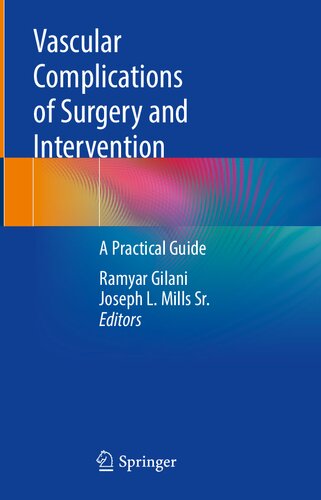

Most ebook files are in PDF format, so you can easily read them using various software such as Foxit Reader or directly on the Google Chrome browser.
Some ebook files are released by publishers in other formats such as .awz, .mobi, .epub, .fb2, etc. You may need to install specific software to read these formats on mobile/PC, such as Calibre.
Please read the tutorial at this link: https://ebookbell.com/faq
We offer FREE conversion to the popular formats you request; however, this may take some time. Therefore, right after payment, please email us, and we will try to provide the service as quickly as possible.
For some exceptional file formats or broken links (if any), please refrain from opening any disputes. Instead, email us first, and we will try to assist within a maximum of 6 hours.
EbookBell Team

5.0
48 reviewsThe concept for this book evolved over many years of intense clinical practice during which a wide variety of vascular complications were encountered as a result of other surgical or interventional procedures. In this book, the authors describe cohesive efforts by experts in the field as they commit to advancing health care quality by all professionals. It should be noted at the outset that the book does not discuss various non-vascular or systemic complications of patients undergoing vascular interventions such as myocardial infarction, renal or respiratory failure. Instead, the content is divided into four separate sections. The material begins with an introduction to vascular anatomy and function. There follows a section addressing specific complications of the vascular system that can occur in any patient, sometimes even without intervention. The third section addresses complications specific to interventions and surgical procedures. The final section is dedicated to the delayed and long-term sequelae attributable to the most commonly encountered vascular complications.
Vascular Complications of Surgery and Intervention: A Practical Guide is targeted towards dedicated health care professionals managing patients affected by inadvertent but potentially disastrous vascular complications and for those practitioners performing interventions either directly upon the vascular system or procedures that have potential for collateral impact.